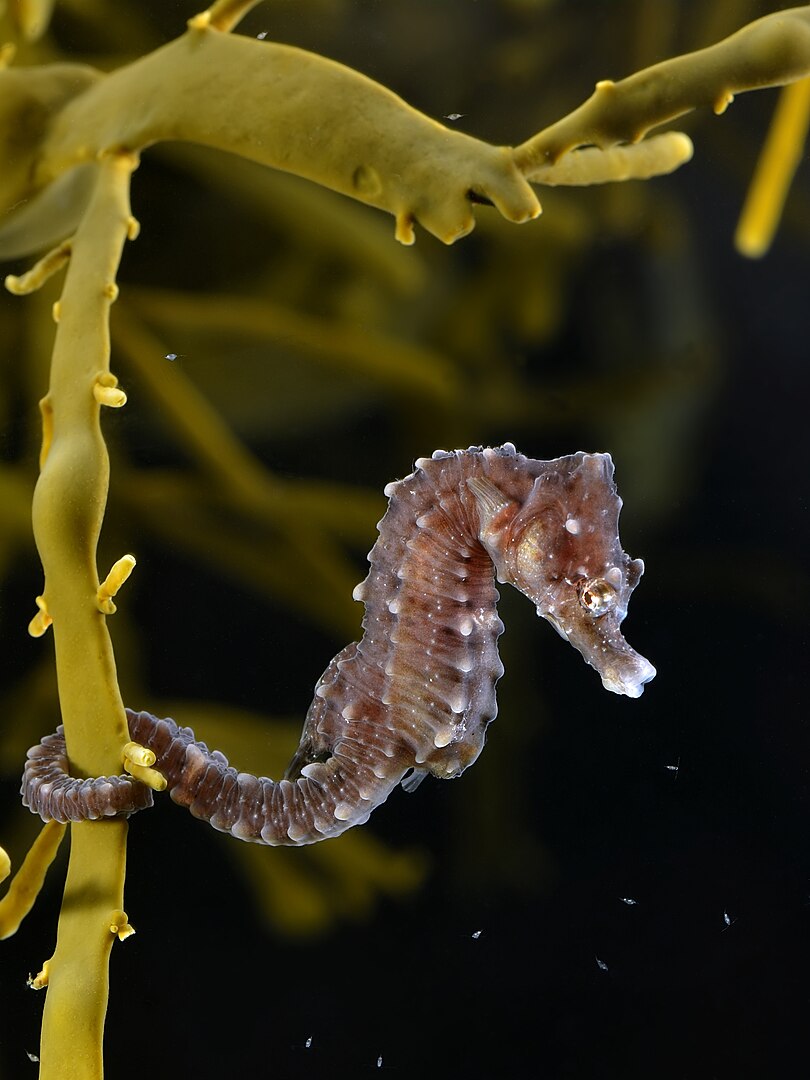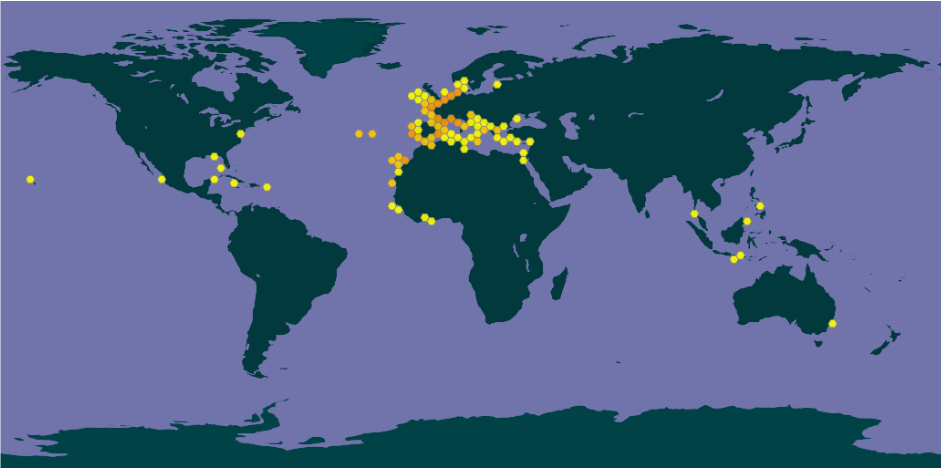Hippocampus hippocampus (Linnaeus, 1758)
Short-snouted seahorse

| Kingdom | Animalia |
| Phylum | Chordata |
| Class | Actinopterygii |
| Order | Syngnathiformes |
| Family | Syngnathidae |
| Genus | Hippocampus |
| Species | Hippocampus hippocampus (Linnaeus, 1758) |
Listen to the SONIFIED SPECIES

Known records of this species

Taxon Description
The short-snouted seahorse (Hippocampus hippocampus) is a species of seahorse in the family Syngnathidae. It is endemic to the Mediterranean Sea and parts of the North Atlantic, particularly around Italy and the Canary Islands. In 2007, colonies of the species were discovered in the River Thames around London and Southend-on-Sea. Their preferred habitat is shallow muddy waters, estuaries, or seagrass beds.
Habitat
Hippocampus hippocampus are typically found on the bottoms of rocks, in seaweed or in the edge of sea grass beds in shallow muddy water. They can only be found in waters that are up to 77 metres (253 ft) deep. They have a very restricted home range because they have very limited daily movements. The most of their movement occurs when storms occur and the seahorses are moved with the current or they are carried away because of their grasp on debris that is floating in the water. In the winters they typically move into the deeper water to escape rough seas. They will use their tails to anchor themselves to stems of plants and are able to camouflage very well.
Description
Hippocampus hippocampus has potential to be up to 15 centimetres (5.9 in) long. They have a prominent spine above each eye. They have snouts that are short and upturned. Their snouts are about 1/3 of the length of their head. Their dorsal fin has 16-18 rays with a dark stripe that runs parallel to the margin and provides propulsion. Their pectoral fins have 13-15 rays and are located below the gill openings. Their pectoral fins are mostly utilized for stability and steering. Their angular appearance comes from the bony tubercles that are in the body rings. Their bodies can be black, purple, orange or brown. They have a tail that is unable to bend backwards but is considered semi-flexible. They use it as an anchor by wrapping it around coral or sea grass. The tail is also used to get hold of a partner during greeting and mating services.